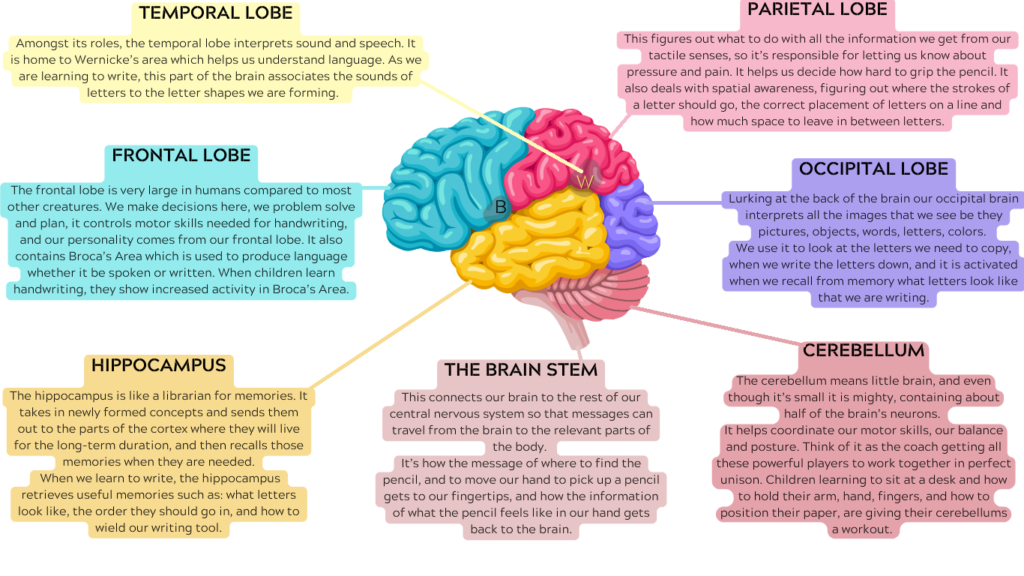Brain Science and Handwriting
The Areas of the Brain involved in Handwriting
Handwriting isn’t just a skill; it’s a brain-boosting marvel that strengthens existing connections and forges new ones, enhancing our reading abilities. But how does it all happen? What exactly occurs in our brain when we hold a pencil in our little hands and transform wobbly lines into recognizable letters?
Enter the cerebral cortex, the chunky and wrinkled outer layer of the brain often portrayed in Frankenstein movies as the “gray matter.” It comprises billions of neurons, the brain cells that communicate with each other, enabling us to process sensory information, make decisions, and act accordingly. These neurons form crucial connections known as neural networks, facilitating a myriad of functions.
You might wonder, why is the cerebral cortex so intricately wrinkled? Well, think of it as a piece of paper filled with text. Folding that paper into a compact square allows for efficient utilization of space while preserving all the information it contains. Similarly, the cortex’s bulging folds (gyri) and deep valleys (sulci) accommodate numerous neural networks efficiently.
The cerebral cortex is further divided into lobes, each with its specific tasks. Working in harmony with the cerebellum and brain stem, these lobes collaborate to make handwriting possible.
Introducing Your Lobes and their Writing Buddies

It’s no easy feat for these brain components to cooperate seamlessly. Young writers and readers often make mistakes, but over time, they learn to communicate and collaborate more swiftly and efficiently until writing feels effortless.
 HANDWRITING HEROES
HANDWRITING HEROES
